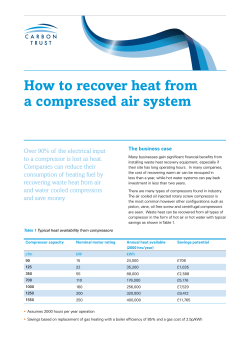
Development of a Simplified Sample Preparation Method for
CONffIDENCE: Contaminants in food and feed: Inexpensive detection for control of exposure Development of a Simplified Sample Preparation Method for the Determination of Paraquat and Diquat in Food Commodities Diana Inês Ströher Kolberg, Dorothea Mack, Michelangelo Anastassiades Chemisches und Veterinäruntersuchungsamt Stuttgart, Schaflandstr. 3/2, 70736 Fellbach, Germany Introduction LC-MS/MS - Conditions Quaternary ammonium compounds constitute an important group of Column Obelisc R 2.1 x 150mm pesticides. Paraquat and diquat are non-selective contact herbicides used Pre-column Obelisc R 2.1 x 10mm among others on cereals as desiccants and on potatoes for defoliation to Eluent A 20 mmol NH4-formate in water pH 3 adjusted with formic acid facilitate mechanical harvest. Their physical properties, such as the low Eluent B Acetonitrile vapor pressure, high water solubility and the high binding potencial to soil Injection Volume 10 µL which prevents their leaching to aquifers and their uptake by crop plants, Flow rate 0,4 mL min min-1 make them suitable for agricultural uses. Due to the permanent ionic Transition masses (m/z): Paraquat (186/171, 171/77, 171/155, 171/103, 186/155); Paraquat D6 (192/174) Diquat (184/128, 183/157, 184/156, 184/78, 183/130); Diquat D4 (188/160) character, these herbicides are highly hydrophilic and thus not amenable to multiresidue methods involving liquid-liquid-partitioning. At the same time their high affinity to binding on various surfaces requires special attention in extraction as well as the storage of solutions. Within this Results project the extraction efficiency of these two compounds from potatoes 20 Diquat x10 Paraquat and barley was tested at various conditions. The method was tested on incurred paraquat and diquat. Experimental Procedure Concentration spiked barley and potato samples as well as on samples containing 16 12 8 4 Weigh in 10g of frozen sample 0 MeOH + HCl MeOH+H2O+FA 2% FA w ithout w ithout heating w ithout heating heating (5 g for dry material) MeOH+H2SO4 MeOH + 5% FA w ithout heating w ithout heating MeOH + HCl w ith heating MeOH+H2O+FA w ith heating MeOH+H2SO4 w itht heating MeOH + 5% FA w ith heating Figure 2: Comparison of the different extraction solvents on incurred wheat sample (n= 3) Add ISTD (isotope labelled compounds) Add 10 mL water (for dry material) Extraction Solvents * The extraction with water + 2% formic acid generated a viscous suspension upon heating and was discarded 45% MeOH+50% Water+5% FA Water + 2% Formic Acid Add 10ml of Extraction solvent Shake 2 min Water bath at 80 ºC for 15 min Potato Barley MeOH + 5% Formic Acid 0,01 mg/kg MeOH + HCl 0,1M (1:1) MeOH + H2SO4 0,1M (1:1) Centrifuge 5min, 4000RPM Filter Aliquot (0,45µm syringe filter) 0,1 mg/kg 0,01 mg/kg 0,1 mg/kg Rec RSD Rec RSD Rec RSD Rec RSD Diquat 101 2,4 101 4,4 100 1,7 100 3,1 Paraquat 111 5,6 105 1,4 92 7,0 114 4,3 Table 1: Recoveries and RSDs obtained for diquat and paraquat spiked on potato and barley Fill in vial Perform LC-MS/MS analysis Figure 1: Procedure with different extraction solvents Besides the different extraction solvents, we did also evaluate the effect of shaking time (2 - 30 min) without heating, as well as the heating time itself. Extractions using sulfuric acid 0,6 N (commonly used in previous methods including industry methods) where also tested with the heating time ranging between 30 min and 5h at 100 °C without any improvement compared to the present method. Figure 3: MRM chromatograms of diquat and paraquat in potato at spike level 0,01 mg/kg using instrument API 5500 Figure 4: MRM chromatograms of diquat and paraquat in barley at spike level 0,01 mg/kg using instrument API 5500 Conclusion The procedure established for diquat and paraquat involves extraction with MeOH + HCl 0,1M (1:1) at 80°C for 15 minutes. Analysis is performed by LCMS/MS using the isotopically labelled compounds as ISTDs with the ISTDs helping to effectively eliminate errors caused by matrix-induced suppression in LC-MS/MS. The recoveries achieved were in the range of 92 – 114% for all tested compounds/ commodity/ spike level combinations. The good sensitivity of the method (LOQ 0,006 mg/kg), and the excellent recoveries and RSDs demonstrate that the method is suitable for routine analysis of these herbicides. Although much simpler, the extraction procedure led to extraction efficiencies that are comparable to those of previously published more tedious methods (incurred residues of paraquat and diquat in potato and barley samples). The research leading to these results has received funding from the European Community's Seventh Framework Programme (FP7/2007-2013) under grant agreement n° 211326.
© Copyright 2025














